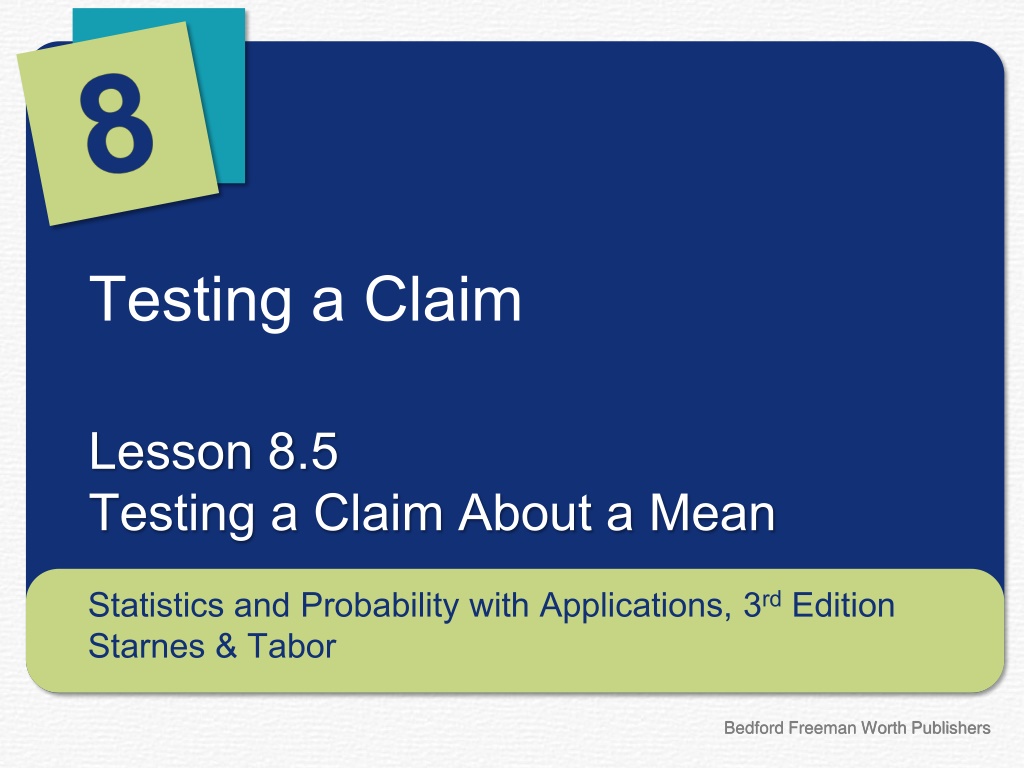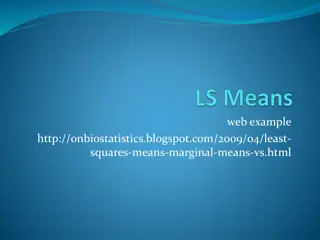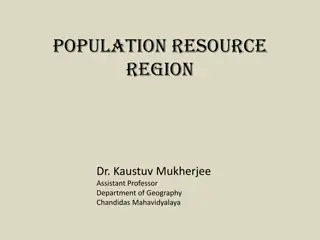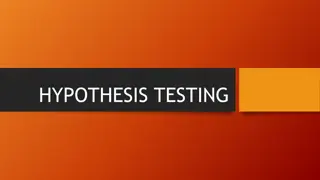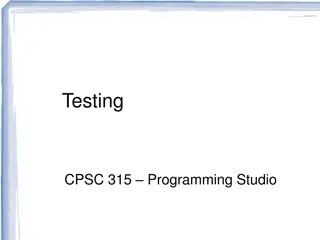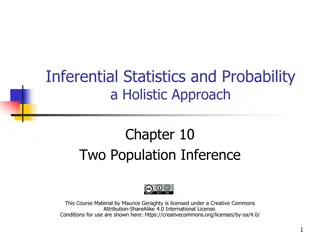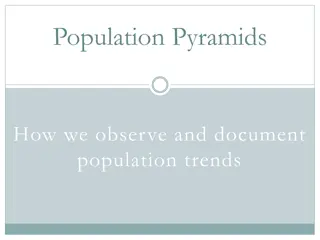Understanding the Significance Testing Process for Population Means
Learn how to test claims about population means, including checking conditions, calculating test statistics, finding P-values, and understanding t-distributions and degrees of freedom. This lesson covers the Random and Normal/Large Sample conditions for significance tests, the modeling of standardized test statistics using t-distributions, and the characteristics and variability of t-distributions compared to the standard normal distribution.
Download Presentation

Please find below an Image/Link to download the presentation.
The content on the website is provided AS IS for your information and personal use only. It may not be sold, licensed, or shared on other websites without obtaining consent from the author. Download presentation by click this link. If you encounter any issues during the download, it is possible that the publisher has removed the file from their server.
E N D
Presentation Transcript
Testing a Claim Lesson 8.5 Testing a Claim About a Mean Statistics and Probability with Applications, 3rdEdition Starnes & Tabor Starnes & Tabor Statistics and Probability with Applications, 3rd Edition Bedford Freeman Worth Publishers Bedford Freeman Worth Publishers
Testing a Claim About a Mean Learning Targets Learning Targets After this lesson, you should be able to: After this lesson, you should be able to: Check the Random and Normal/Large Sample conditions for performing a significance test about a population mean. Calculate the standardized test statistic for a significance test about a population mean. Find the P-value for a significance test about a population mean using Table B. Statistics and Probability with Applications, 3rd Edition 2 2
Testing a Claim About a Mean The Random and Normal/Large Sample conditions must be met before constructing a confidence interval for a population mean. These same conditions must be verified before carrying out a significance test. How to Check Conditions for Performing a Significance Test About Random: The data come from a random sample from the population of interest. Normal/Large Sample: The data come from a normally distributed population or the sample size is large (n 30). When the sample size is small and the shape of the population distribution is unknown, a graph of the sample data shows no strong skewness or outliers. Statistics and Probability with Applications, 3rd Edition 3 3
Testing a Claim About a Mean When the Normal/Large Sample condition is met, the standardized test statistic can be modeled by a t distribution. There is a different t distribution for each sample size. We specify a particular t distribution by giving its degrees of freedom (df). When we perform inference about a population mean using a t distribution, the appropriate degrees of freedom are found by subtracting 1 from the sample size n, making df = n 1. Statistics and Probability with Applications, 3rd Edition 4 4
Testing a Claim About a Mean The t distributions are similar in shape to the standard normal distribution. They are symmetric about 0, single-peaked, and bell- shaped. The t distributions have more variability than the standard normal distribution. It is more likely to get an extremely large value of t (say, greater than 3) than an extremely large value of z because the t distributions have more area in the tails of the distribution. As the degrees of freedom increase, the t distributions approach the standard normal distribution. Statistics and Probability with Applications, 3rd Edition 5 5
Testing a Claim About a Mean t Distribution, Degrees of Freedom A t distribution is described by a symmetric, single-peaked, bell-shaped density curve. Any t distribution is completely specified by its degrees of freedom (df). When performing inference about a population mean based on a random sample of size n, use df = n 1. We can use Table B to find a P-value from the appropriate t distribution when performing a test about a population mean. Statistics and Probability with Applications, 3rd Edition 6 6
Testing a Claim About a Mean upper-tail probability p 0.005 df 0.02 0.01 10 2.359 2.764 3.169 11 2.328 2.718 3.106 12 2.303 2.681 3.055 Our P-value is P(t 2.59) in a t distribution with df = 11. Table B shows only positive t-values and areas in the right tail of the t distributions. But the t distributions are symmetric around their center of 0. So P(t 2.59) = P(t 2.59). The value t = 2.59 falls between the values 2.328 and 2.718. The Upper-tail probability p is between 0.02 and 0.01. Therefore, the P-value for this test is between 0.01 and 0.02. Statistics and Probability with Applications, 3rd Edition 7 7
LESSON APP 8.5 Who needs an aspirin? The makers of Aspaway brand aspirin want to be sure that their tablets contain the right amount of active ingredient (acetylsalicylic acid). So they inspect a random sample of 30 tablets from a batch in production. When the production process is working properly, Aspaway tablets have an average of = 320 milligrams (mg) of active ingredient. The amount of active ingredient in the 30 selected tablets has a mean of 319 mg and a standard deviation of 3 mg. We want to perform a test at the = 0.05 significance level of H0 : = 320 Ha : = 320 where = the mean amount of active ingredient (in mg) in all Aspaway brand aspirin tablets. Statistics and Probability with Applications, 3rd Edition 8 8
Who needs an aspirin? LESSON APP 8.5 1. 2. 3. Check that the conditions for performing the test are met. Calculate the standardized test statistic. Find the P-value using Table B. Show this result as an area under a t distribution curve. What conclusion would you make? 4. Statistics and Probability with Applications, 3rd Edition 9 9
Testing a Claim About a Mean Learning Targets After this lesson, you should be able to: After this lesson, you should be able to: Learning Targets Seatwork/Homework: Check the Random and Normal/Large Sample conditions for performing a significance test about a population mean. Calculate the standardized test statistic for a significance test about a population mean. Find the P-value for a significance test about a population mean using Table B. Lesson 8.1 Seatwork/Homework Pg. 505 #1, 2, 4-6, 8-10, & 12 Statistics and Probability with Applications, 3rd Edition 10 10
